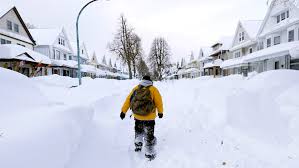As the weather warms and the snow starts to melt, hiking season in Utah begins to shift into spring. With the change in temperature and the onset of “mud season,” it’s important to prepare yourself for the challenges that come with hiking in this time of year. To help you make the most out of your spring hiking experience, here’s everything you need to know—from packing essentials to navigating tricky weather conditions.
Spring Hiking Essentials You Can’t Forget
Before you head out, make sure to pack the right gear for a safe and enjoyable hike. The University of Utah Health recommends these essential items for spring hikes:
- Ample water supply to stay hydrated during your hike.
- Food for energy, including snacks like nuts, energy bars, or fruits.
- A map and compass or GPS device to help with navigation, especially since you might lose signal on your phone.
- Sunscreen to protect your skin from harmful UV rays.
- Appropriate clothing: Layered clothing that’s easy to put on or remove as the weather changes.
- A first aid kit for any minor injuries along the trail.
- Headlamp or flashlight in case you end up hiking near dusk or in low-light conditions.
- An emergency whistle and signal mirror for signaling if you’re in trouble.
- Cell phone or radio for emergency contact in case you’re off the grid.
- Animal-repellant spray to stay safe from wildlife.
Additionally, avoid relying too heavily on your smartphone for navigation. In remote areas, cell phone batteries can drain quickly, or you might lose service altogether. It’s always better to have a backup plan.
Prepare for Muddy and Icy Trails
Spring hiking in Utah can often mean wet and muddy conditions. As the snow melts, trails can become slippery and muddy. Here are some tips to help you manage these tricky conditions:
- Wear waterproof shoes to prevent your feet from getting soaked. Waterproof gear is especially important for keeping you dry and comfortable.
- Dress in clothes you don’t mind getting dirty. Mud will be unavoidable, so it’s best to be prepared to get a little messy.
- The National Forest Foundation suggests bringing a change of clothes and shoes for when you finish your hike. You can store your muddy clothes in a plastic bag to clean them later.
- Avoid walking on the edges of trails, as it can damage the environment, widen the trail, and lead to erosion.
- Be cautious when crossing fast-moving water. Avoid crossing if the water is deeper than knee-height. Wear your shoes to prevent slipping on rocks.
Check the Weather and Be Aware of Hazards
Before setting out on your hike, check the weather forecast. Sudden storms can bring dangers like lightning and flash flooding. The University of Utah Health recommends postponing your hike if you expect stormy weather.
Here’s what you should look out for when monitoring the weather:
- Storm clouds and lightning: If you see storm clouds or hear thunder, it’s time to turn around or delay your hike.
- Flash floods: These are especially common in spring when snow is melting. Avoid hiking in areas prone to flash floods, such as narrow canyons or dry riverbeds.
If you find yourself on a trail when a storm strikes, it’s important to know what to do. According to the American Hiking Society, you should avoid shelters like tents or trail shelters, as they are not safe during a storm. If you can, take cover in a hard-topped vehicle or an enclosed building. If you can’t find shelter, stay away from metal objects (such as trekking poles or metal-framed backpacks) since metal attracts lightning.
Additionally, find a low point in the terrain to avoid being the tallest object around. Do not shelter under trees, as they can attract lightning. The University of Colorado recommends staying in the forest if it’s available.
If you’re hiking in a group, the American Hiking Society advises keeping a distance of at least 100 feet between each person. If you are stuck waiting for the storm to pass, crouch down with your feet together and keep your head tucked for safety.
Watch Out for Flash Floods
Flash floods can happen unexpectedly during spring hikes, especially if you’re hiking in areas near rivers, streams, or canyons. The Utah Department of Natural Resources offers these signs to look out for that could signal a flash flood:
- Rapidly rising water levels or faster-moving water than usual.
- New debris in the water.
- A noticeable change in water color.
- Storm clouds or an approaching storm.
If you notice any of these signs, don’t hesitate to get to higher ground immediately. Flash floods can happen quickly, and it’s safer to be cautious than to wait and risk being swept away.
Avalanche Danger During Spring Hiking
Although it may not be the first thing on your mind, spring hiking can still present avalanche danger. This is especially true if you plan to hike in areas with significant snow cover. It’s important to check snow levels and avalanche danger ratings before venturing into areas that could be prone to avalanches. The University of Utah Health recommends researching the area and making sure you are prepared for snow conditions if you plan to hike in the backcountry.
Share Your Plans Before Heading Out
Whether you’re hiking solo or with a group, it’s always a good idea to let someone know where you’re going and when you plan to return. This simple step can help others find you in case something goes wrong during your hike. Always check in once you’re back from your adventure.
Spring Hiking: Enjoy the Outdoors Responsibly
Spring hiking in Utah offers a refreshing and exciting way to experience the beauty of nature. However, the mud season and the potential for weather hazards mean that preparation is key to having a safe and enjoyable time. Be sure to pack the essentials, check the weather, and stay alert to the conditions around you. With the right mindset and gear, you can make the most of this beautiful season.
Disclaimer – Our team has carefully fact-checked this article to make sure it’s accurate and free from any misinformation. We’re dedicated to keeping our content honest and reliable for our readers.




